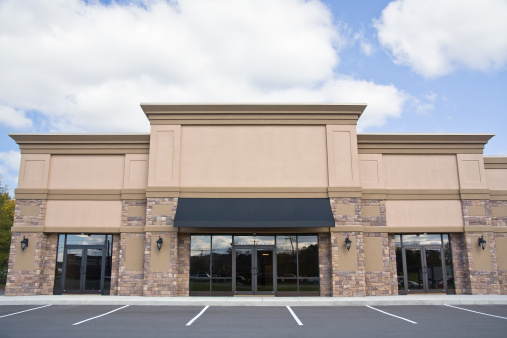
by My Commercial Capital | Dec 30, 2022 | Blog
From the outskirts of rural communities to the heart of metropolitan hubs, you can find food trucks selling everything from gourmet French crepes to authentic Thai street fare. Becoming a food truck owner might be the perfect fit for you if you have a passion for serving your neighborhood, value being your own boss, and don’t have a lot of money for startup costs. If you are thinking of launching a food truck business, this guide is for you.
Startup Costs
The initial investment needed to launch a food truck business depends on various factors. There are also one-time expenses and location-specific costs.
Examples of one-time startup expenses include purchasing the food truck, advertising, website design and legal fees. And then, there are recurring expenses for salaries, leasing equipment, credit card processing, and even gas.
Funding Options for Your Food Truck Business
Acquiring funding for a food truck business can be challenging. Create a sound business plan first. Good personal and business credit increases your chances of getting a business loan.
Funding can come from a variety of places, including:
- Community sponsors
- Opening a business credit card
- Crowdfunding
- Personal investors like family and friends
Create a Food Truck Business Plan
It is essential for food truck owners to create and maintain a business plan. A good business plan should incorporate these elements:
- An executive summary
- Company description
- Market analysis
- Organization and management
- Service or product line
- Marketing and sales
- Funding request
- Financial projections
- Appendix
Finding a Food Truck for Sale
There are several resources out there to help you find a food truck, including
- Local online classifieds
- National online classifieds
- Leasing and franchising
- New custom trucks
Pros of a Food Truck Business
- Business ownership: Several tax advantages come with owning your own business
- Freedom: You’ll have complete control of menu items, events to vend at, employees, etc.
- Mobility: You’ll be able to bring your business to different locations
Cons of a Food Truck Business
- Time: Long hours are the norm
- Competition: You will likely have a lot of competition
- Ordinances and zoning: Each location has different rules
Food Truck Permits and Ordinances
It’s crucial to research the various areas you are considering and the necessary permits and regulations. Some things to consider include the following:
- Food safety
- Seller’s Permit
- Zoning and parking
- Vehicle license
- Fire certificates
- Employee Identification Number (EIN)
- Business permits and licenses
Bottom Line
Once everything is in order, running a food truck business can be fun. Create a business plan with a full analysis of your projected costs if you want to start a food truck business. Once you have a budget, you can apply for financing.

by My Commercial Capital | Dec 23, 2022 | Blog
When most people think about “retail”, they think about online shopping. While there are many retailers who are finding their success online, there is still a market for brick-and-mortar stores. Most of these also have a website, but shopping in person simply can’t be replicated online.
In this article, we’ll outline the steps that you need to follow to open a retail store.
8 Steps to Open Your Retail Store
Think of an idea, create a business plan
First of all, you need to think of an idea and create a business plan. Ask yourself these questions:
- What do I want to sell?
- Who will be my target customer?
- What type of prices will I have?
- Who are my local and industry competitors?
- Who will be on my team?
Of course, there are lots of other questions that will need to be answered, but these questions will help you get started.
Once you have answered these, you can consider your business funding options and marketing ideas. These can be addressed in your business plan. You may want to find out how you can attract investors and the various types of business loans that are available.
You’ll need to consider your fixed and variable costs. This may lead you to the discovery that you should start with an online business and expand into a physical location in the future.
Choose your store’s name
Next, you will need to come up with a name for your store. There are a few things you should keep in mind:
- Meaning: the name should mean something to customers
- Simplicity: the name should be easy to say
- Uniqueness: choose a name that is original and unique, not similar to competitors
The name of your business does not impact your success, so this shouldn’t be your primary focus. However, you do want to give it some thought.
Don’t forget the legalities
In order to remain compliant with government entities, you’ll need to consider the legalities including business structure, regulations, and getting the proper licenses and permits.
If you’re opening a retail store, you’ll need certain business licenses and permits, including:
- Basic business operation license
- Employer identification number
- Seller’s license
When choosing a legal structure, you’ll follow the same steps as other businesses- but understand that becoming a sole proprietor is risky. You’ll want to choose a structure that doesn’t put all of the responsibility on one owner. Most retailers choose to establish an LLC or a corporation to limit their personal liability.
Choose your location
When opening a physical store, you must find the best location. You may be tempted to choose a location based on the cost and hope that you make enough money- but there’s something to be said about being in a busy area of town. A location in a busy part of town may cost you more, but it may translate into a lot more customers.
When looking for the best location, think about your target demographic and where they typically hang out. Then, try to find a space in that area. While this may sound simple, it makes the most sense. If you don’t put your business where your customers are, they are less likely to shop with you.
Create a personal experience
Online shopping offers convenience that a physical location does not. When shopping online, the store is open 24/7. Therefore, in order to find success, you must add value that your competitors do not.
This often means creating a personal experience for your customers. Many retailers find that offering samples or allowing customers to try on clothes increases their success. Online retailers simply can’t offer this type of personal experience. Your primary focus when creating your business should be your customer.
Build relationships with vendors
When opening a retail business, you’ll need to establish relationships with vendors. As a small business owner, you’ll face some unique challenges- but you must take steps to consistently please your customers. One of the best ways to do this is by establishing relationships with your vendors. If you can do this, you will be set up for success. This may be challenging if you use overseas vendors.
Explore opportunities for marketing
One of the most important steps in building a successful business is marketing. If you have an online business and want to expand to a physical location, consider experimenting with pop-up shops. This is a shop that is opened in a temporary location for a short period of time.
This will allow your business to move around and attract new customers. A pop-up shop can help you determine whether or not your physical location would be successful.
Other marketing opportunities include social media and/or in-store discounts. Sales are a great way to increase foot traffic to your store. No matter which marketing tactics you use, you must find creative ways to reach your customers.
Plan a grand opening
When opening a retail store, plan a grand opening. This doesn’t mean that you need to spend a lot of money- but you do want to make a big deal. Reach out to your local media outlets to let them know about it. This is a great way to get the word out without spending money on marketing.
In addition to media coverage, put your grand opening information on social media and other channels for several weeks in advance. Don’t wait until a few days before the event to mention it.
Keep in mind that it doesn’t have to be a major deal, but you should take it seriously. It won’t make or break your business, but it will make people aware- and hopefully get them excited- about your business.
Conclusion
When opening a retail store, there are certain things you need to do. Keep these in mind to improve your chances of success. If you need help, contact My Commercial Capital today. We can help you get started.

by My Commercial Capital | Dec 20, 2022 | Blog
Your website is one of the most common avenues where you connect with your customers. Investing the time and energy into building and maintaining it is bound to pay off. Here are a few key web design best practices that you need to pay attention to if you want your business to thrive.
Cut Down on Text
In this day and age, visually engaging information is prioritized. Don’t overwhelm your webpage with a lot of text, lengthy paragraphs, and long text. Keep everything short, sweet, and to the point.
Use Images
Conveying your products and services with images instead of words is proven to be far more effective. If you want to gain your target audience’s trust and attention, make sure that you are using relevant visuals.
Boost Your Brand Awareness With Color
Because your audience is strongly attracted to visuals, having a cohesive, clear color scheme creates brand awareness. This palette can be used throughout your web design.
Improve Your Navigation
The last thing a potential customer wants to do is get lost in a rabbit hole on our website. Make sure that your website uses web design best practices and make your navigation as simple and navigable as possible. Nothing that a visitor is looking for should be more than two or three clicks away.
Different Device Navigation
One of the biggest mistakes that small business owners make with their websites is only testing on one type of device. Today’s customers use computers, smartphones, and tablets to navigate online content. Your website should be optimized for any type of device that a visitor could be using. Keep in mind that you should be testing whenever you make any changes to your website.
Clarify Call to Action
Oftentimes websites have call-to-action buttons and opportunities sprinkled throughout; however, they are unclear and therefore irrelevant. If you want your customers to engage with your online content, make sure that you clarify your call-to-action items, create consistency on different pages and make each call-to-action item clear to an unfamiliar visitor.
Upgrade Your Search Engine Optimization and Load Time
While you may be focusing on the front end of your website, the back end is just as important. Improving your search engine optimization with a sitemap, better usability, keywords, working links, and improving your website’s load time can improve the backend. Not to mention that this can help get traffic to your website.
If you want your website to perform optimally, you need to invest in web design best practices. Let your website boost your business performance and truly get the ultimate bang for your buck with these changes.
Seek Expert Assistance
Creating and maintaining a top-tier website doesn’t have to cost an excessive amount. My Commercial Capital offers a variety of packages to meet your company’s needs. Even small businesses can get beautifully made sites that draw customers in. To learn what our experts can do for you, give us a call today.

by My Commercial Capital | Dec 16, 2022 | Blog
If you want to start a business and do not have the cash reserves to do so, you will need some sort of financing. There are many options, including:
- Bank loans
- Alternative loans
- Factoring
- Crowdfunding
- Venture capital
With all of these options, it can be hard to choose the best one.
First of all, you need to understand that there are two broad categories:
- Debt financing
- Equity financing
The best way to determine which is best is by learning more about what they are and weighing the advantages and disadvantages of each.
Defining Debt Financing
If you’re like most people, you’re familiar with how a loan works. Debt financing is basically the same thing. You accept funds from an outside source and make a promise to pay the principal plus interest. This is the “cost” of the loan.
The borrower puts up collateral as an assurance to the lender and makes monthly payments toward the loan. Collateral may be accounts receivable, inventory, insurance policies, real estate, and more. If the borrower defaults, the lender take possession of the collateral.
Common Types of Debt Financing
The most common types of debt financing are:
- Conventional bank loans
- SBA loans
- Merchant cash advances
- Lines of credit
- Business credit cards
Advantages & Disadvantages of Debt Financing
There are several advantages and disadvantages associated with debt financing. The top advantages are:
- Clear, finite terms
- Lender is not involved in company operations
- Interest payments are tax-deductible
The top disadvantages are:
- High repayment/interest fees
- Repayments start immediately
- Potential loss of collateral
Defining Equity Financing
Equity financing, on the other hand, involved selling a stake in your company to investors who will share in your future profits. There are several ways that you can obtain equity financing. If you choose this route, you don’t have to make regular installments and you don’t have to deal with high-interest rates. Instead, the investor will be part owner of your business, meaning they have a right to a portion of your profits and possibly a spot on the board.
Common Types of Equity Financing
The most common types of equity financing are:
- Angel investors
- Venture capitalists
- Equity crowdfunding
Typically, angel investors and venture capitalists are experienced and discerning. They do not back just any project. In order to convince them to consider funding your business, you must have a pro forma with solid financials, a prototype of your product/service, and a management team. If they are not already in your network, it can be hard to find them.
While you do not have to make interest payments, the overall cost of equity financing is often higher. Equity holders want to be compensated, which typically means paying dividends or ensuring equity price appreciation.
Advantages and Disadvantages of Equity Financing
There are several advantages and disadvantages associated with equity financing. The top advantages are:
- Ideal for start-ups in industries that are growing rapidly
- Allows for rapid scaling
- No repayment until company profits
The top disadvantages of equity financing are:
- Difficult to obtain
- The investor is involved with company operations
Which is best for your business? In order to decide which is best for your business, you must consider the type of business you have and if the advantages outweigh the disadvantages. Research what type of funding your competitors are using. Most companies use a combination of the two. If you need help determining the best financial solution for your business, contact My Commercial Capital right a

by My Commercial Capital | Dec 9, 2022 | Blog
Asset-based lending is a type of business loan that is backed by collateral instead of based on the borrower’s credit score. In this article, we’ll explain what you need to know about asset-based lending.
What is asset-based lending?
Asset-based lending is based on the value of the asset that is put up as collateral to guarantee the loan. Approval depends on the asset instead of the creditworthiness of the borrower. If the borrower does not pay the loan, the lender can seize the collateral. An asset-based loan is typically secured by accounts receivable, inventory, real estate, or equipment.
How does it work?
Asset-based lending is based on the asset or assets put up as collateral. Once the asset is put up as collateral, a loan in the amount of an agreed-upon percentage is offered. Lenders prefer to work with larger asset-based loans because it costs them the same to monitor it no matter what the size.
In order to understand asset-based lending, let’s look at the most common type of asset-based loan: a mortgage. Typically, mortgages have an interest rate and a term that are used to determine your monthly payments. If you default on the loan, you put your property in danger of being repossessed.
In some cases, an asset-based loan may be structured as revolving credit. In this case, the lender determines the accounts receivable and inventory to create borrowing capacity.
Which assets can be used?
Businesses have many assets that could be used as collateral for a loan. Here’s a list of the assets that can be used:
- Accounts receivable
- Real estate/property
- Equipment
- Inventory
Obviously putting your business assets up as collateral gives you incentive to make sure the loan is paid. For example, if you were to lose your property, it could shut your business down. Before taking any loan, make sure that you have a plan to pay it back.
Advantages and Disadvantages of Asset-Based Loans
As with any other type of funding, there are advantages and disadvantages associated with asset-based loans:
Advantages
- Easier to qualify for
- Approved/funded quickly
Disadvantages
- Puts an asset at stake
- Risks your credit score/history
- May be viewed negatively by future lenders
- Has additional fees
Conclusion
Asset-based lending can be helpful when your business needs funding. However, in order to obtain this type of funding, you must be willing to put up one or more assets, which the lender can seize if you default. If you’re ready to move forward with an asset-based loan, contact My Commercial Capital today.





